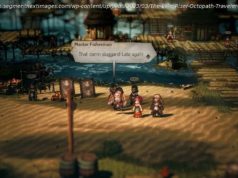Nate Fox, game director at Sucker Punch for Ghost of Tsushima, talks with GamesBeat about the making of the samurai epic and the inspirations for it.
From the Japanese point of view, there is no way around it. Sucker Punch Productions, the maker of the Ghost of Tsushima samurai epic, is a gaijin studio. Gaijin is the Japanese word for foreigners, and it’s usually not a kind word. But in the case of Tsushima, there has been almost universal praise for the beautiful art and respect for history and Japanese culture in Sony’s last major exclusive for the PlayStation 4 game console. It debuted July 17, and people bought more than 2.4 million copies in its first three days of sales. And Japanese reviewers loved the game, which roughly depicts the Mongol invasion of Japan in 1274. I interviewed Nate Fox, a game director at Sucker Punch. We talked about how the studio went about making the game, starting with its painstaking research into Japanese history, inspirations such as filmmaker Akira Kurosawa’s The Seven Samurai and the comic book Usagi Yojimbo, and consultation with Sony’s vast developer resources in Japan. Ghost of Tsushima is an open-world adventure where you fight as a samurai defending his homeland. Jin Sakai has to make choices between the honor of the samurai code and the dishonor of fighting in stealth like a ninja against impossible odds. I played through the whole game and talked with Fox about everything from the inspirations to the ending. We talked about being sensitive to cultural appropriation. We also talked about why Guitar Hero players make the best samurai. Here’s an edited transcript of our interview. We talk about story spoilers in this interview — Ed. GamesBeat: I know you have talked about the influence from things like The Seven Samurai and Usagi Yojimbo. What do you think was most influential? Nate Fox: I could tell you the percentages for me, but the game is made by this big team. When you say, “Hey, let’s make an open-world samurai game where you get to explore feudal Japan,” everyone draws from their own impressions of what that means. Early on in production I did a questionnaire for the team. When people think “samurai,” what’s their core concept of what that is? When we deliver a samurai game, we’re harnessing what people’s imaginations say is true. The center of it was The Seven Samurai. That was the foundational concept for so many people about what a samurai story is. For me it’s definitely The Seven Samurai, and it’s definitely Usagi Yojimbo. Probably Usagi Yojimbo, for me, is 40 percent of the mix, and then it’s a combination of The Seven Samurai and Yojimbo with a bit of good old Lone Wolf and Cub. Have you ever read Usagi Yojimbo? GamesBeat: No, that was new to me. I’m not so great on Japanese culture sometimes. Fox: It’s kind of weird. It’s written by Stan Sakai, who grew up in America, but grew up watching all these classic films. He’s translating Miyamoto Musashi’s life in a loose way, in this very easy-to-take-in format of comics, with anthropomorphized animals. I feel like it’s the perfect way for people to get exposed to the genre if they’re maybe intimidated by a three-hour movie like Seven Samurai. GamesBeat: It felt like a lot of the influence there was on the open world. A ronin could just go somewhere and start helping people. Fox: Absolutely. The [Kurosawa] movie Yojimbo does this as well. This lone figure, the lonely warrior, against this big tapestry of nature, wandering and finding a place in need, or coming upon somebody on a mountain path, and it’s their job to help the people around them — that’s the classic setup for serialized adventure. It plays very well into an open-world game. We want you to get lost in the landscape of Tsushima. You come upon people and get involved with their stories, instead of feeling like you’re driven down a path. GamesBeat: With The Seven Samurai, if you look a bit more closely, it seems harder to see the influence. How would you describe that part? The storyline is very different. Even things like the humor really aren’t the same. Fox: That movie is incredibly rich on so many axes. We get close to it, but that’s like saying, “Oh, we wanted to write great dialogue, so we modeled it after William Shakespeare.” We’re talking about the best form of art ever created here. We’re aiming for the stars. Seven Samurai is important to me because it talks about people who are helping others selflessly, and it’s also talking about the difference between the samurai and the peasants, and their relationship to each other. How the two groups interconnect. If you look at Ghost of Tsushima, Jin Sakai, as he transitions to become the ghost, becomes a hero of the people of the island, he rejects his identity as part of this narrower caste of samurai. In that way, it’s talking about some of the themes in Seven Samurai. It’s not as elegant as the movie, but again, that movie is peerless. GamesBeat: I liked the balance between the idea of honor and dishonor, the samurai and the ninja. Some people pointed out that the ninja weapons are so cool that you can’t keep from using them. It sort of undermines the honorable path. Fox: In a game, we’re really telling one story. Jin is absolutely walking away from the man he thought he was going to be in order to become the person that, morally, he feels he needs to be for the people around him. That means doing things like using poison or explosives that he wouldn’t have thought he would use in the past. That these weapons are too fun not to use, that’s our intention. We want you to be empathetic with Jin and experience what he’s doing, where he‘s going, not just through cutscenes, but also through the way you play the game. You find it’s more expedient, or it just works better, to stab people in the back. But you’re reminded throughout the narrative that the people around you view that as loathsome, and there are repercussions to unleashing that kind of chaos and showing that it works in the wider world. GamesBeat: You had this great success at being a Western studio making a game about Japan. I wonder what that balancing act was like, how you approached that as outsiders. Fox: The first and most important step is to fully recognize that we, as a bunch of people in Washington state — we don’t know enough to succeed. We’re totally ill-equipped to do this game justice. Once you say that out loud to yourself and to the team, then you expand your concept of what a team is. You talk to experts to fill in the gaps in your knowledge. It’s really the experts in motion or dialogue or cultural conventions that helped us early in the process, and helped us all throughout the process. Playing the game all the time, giving us feedback on things we didn’t know were mistakes so we could correct them. If we have any success in this regard it’s because of the help of experts. GamesBeat: It must have been tough to figure out what mattered about history and what didn’t in that respect. I saw someone mention that there were katanas in the game instead of tachis, and tachis might have been more historically appropriate, but I couldn’t tell the difference between the swords. I didn’t realize that detail was even there, but to someone else it might have mattered. Fox: Absolutely. We definitely are inspired by a real historical event, but the game is not a historical reproduction. It’s really striving to create a feeling of authenticity against those classic samurai films. Things from different time periods might be put together, so it’s a little anachronistic. The case you brought up, about tachi swords, for a while in the plot we had a moment where the tachi would break inside of the boiled leather of the Mongol armor, which is what really happened. The katana became more prevalent as a result of this battle against the Mongols in 1274. We ended up not doing that because we wanted to have the swords in the game have this long history.
Start
United States
USA — software How a gaijin studio made the beautiful unrealism of Ghost of Tsushima






